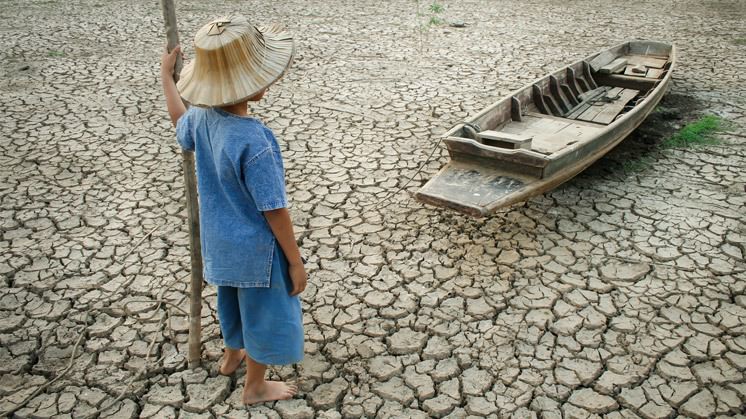Climate migrations
Displaced by climate change: a growing reality
In 2022 alone, climate disasters caused nearly 32 million internal displacements worldwide, according to a report by the International Displacement Monitoring Centre. The figure shows a very worrying trend, representing an increase of nearly 43% over the previous year's levels.

The consequences of global warming generate significant migratory movements: as revealed in the latest Global Report on Internal Displacement [PDF] External link, opens in new window. (2023), natural disasters caused nearly 32.6 million internal displacements in 2022, still more than displacements due to armed conflict (28.3 million migrations).
Droughts and the advance of desertification — as well as the lack of harvests, torrential rains, alterations in seasons, and extreme temperatures — are only some of the reasons triggering this type of migrations.
Although the consequences of climate change affect many regions, there are five areas especially affected in which displacements are counted by millions:
Environmental migrations a global scale reality
- Pakistán 8.168.000
- Philippines 5.455.000
- China 3.632.000
- India 2.507.000
- Nigeria 2.437.000


32.6 million internal displacements in 2022
The internal displacements figure refers to the number of forced movements of people within the borders of their country recorded during the year.
Weather-related 31.845.000
-
Floods 19.219.000
-
Storms 9.980.000
Cyclones 7.592.000
Other storms 2.388.000
-
Droughts 2.215.000
-
Wildfires 366.000
-
Landslides 53.000
-
Extreme temperatures 12.000
Geophysical 716.000
-
Earthquakes 699.000
-
Volcanic eruptions 13.000
-
Landslides 3.700
Source: Global Report on Internal Displacement 2023
 VER INFOGRAFÍA: Environmental migrations: a global scale reality [PDF]
VER INFOGRAFÍA: Environmental migrations: a global scale reality [PDF]
- Pakistan: Floods and landslides caused by heavier than usual monsoon rains in June 2022 triggered a major health emergency in some areas of the country. The country leads the ranking of displacement associated with natural disasters in 2022, with more than 8.2 million climate refugees.
- Philippines: The weather in the Philippines is unpredictable and it is one of the regions most affected by typhoons: Nalgae, known locally as Paeng, swept through ten of its provinces in October 2022, causing some 3 million displacements, the highest number for a single event in the region in the year.
- China: Some of the storms that hit the Philippines in 2022 moved towards the coast of China, causing an estimated 1.8 million displacements, mainly in the provinces of Zhejiang, Guangdong and Guangxi. Seventy-two per cent of all natural disaster displacements in the Asian giant were pre-emptive evacuations.
- India: As in other South Asian countries, heavy monsoon rains hit parts of India hard. The north-eastern state of Assam was affected in May 2022 and the same region was flooded again in June. Nearly 5 million people across the state were internally displaced.
- Nigeria: The African country with the highest internal migration generated by natural disasters in 2022, with 2.4 million displacements, its highest in a decade. The increase was mainly due to the results of severe flooding between June and November.
The only solution to reducing the consequences of climate change lies in the reduction of greenhouse gas emissions, a need reflected in the Sustainable Development Goals of the United Nations (Goal 13: Climate Action) and highlighted in the latest Climate Summits. The commitment to clean and renewable energies is key to achieving the decarbonisation of the economy and to coping with the great environmental challenges facing humanity in the 21st century.

Climate change
Leading the fight against climate change.

Countries most affected
Which countries are most threatened by climate change?

Sea level rise
Does sea level rise really endanger our future?

How to fight against global warming
Towards a 1.5º C scenario with robust policies.




